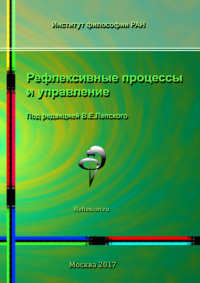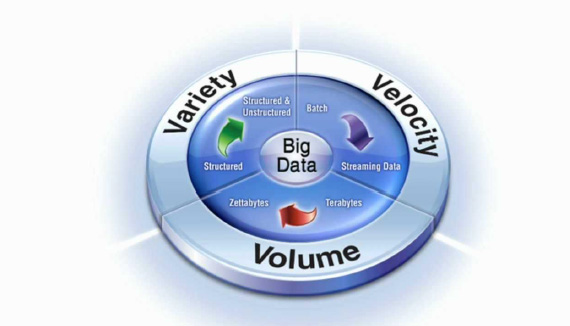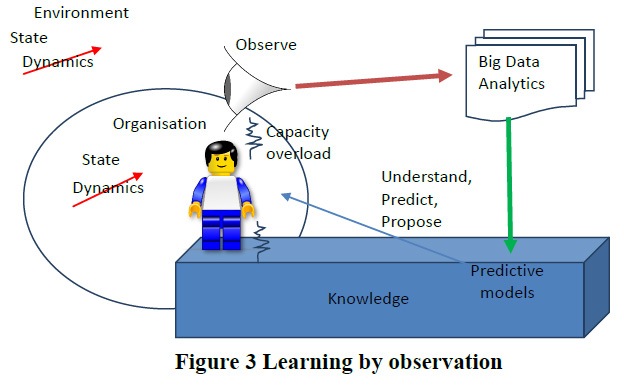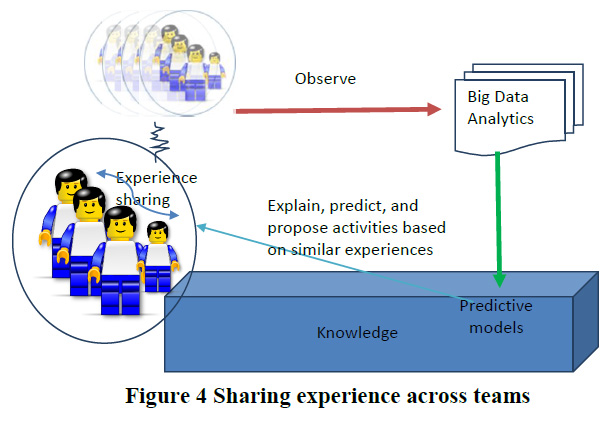
Рефлексивные процессы и управление. Сборник материалов XI Международного симпозиума 16-17 октября 2017 г., Москва
Presently there is growing interest in systems science in "translating" knowledge so that it is easier for practitioners to use it. The intent is to minimize jargon and maximize the utility of knowledge. Applied knowledge is very important, particularly for transdisciplinary fields. However, if we devote too much attention to translation or technology transfer or applications, we may miss some opportunities. Understanding systems theories developed in other societies requires understanding the problems that people in those societies are trying to solve. Theories are answers to questions. One cannot fully understand a theory until one first understands the question that gave rise to the theory (Umpleby 1999).
In universities around the world people use essentially the same theories and methods in the physical sciences. In legal systems there has been convergence between North America and Europe due to the recent growth of the European Union and the desire to facilitate trade by adopting similar rules and procedures. In biology there are some differences in how medicine and agriculture are practiced. In social, political and economic systems there is great variety and much to learn from other societies.
Do societies develop similar ideas eventually as they encounter situations requiring those ideas? Or do they develop different solutions to similar problems? Or are they trying to develop in different directions? If the latter, what explains the difference? Since scholars now interact globally rather than nationally, we have new opportunities to learn from each other. If societies can preserve and enhance their traditions, while learning from other societies, we should experience a remarkable flowering of human society. My particular interest is in methods of governance which enable societies to be secure, stable and innovative.
Our thinking about how to improve our societies has changed from revolution or reform to evaluating government programs with controlled experiments (Campbell 1969), to expanding our conception of science (Umpleby 2017), to noting the importance of institutions and engaging in multi-country studies (Acemoglu and Robinson 2012) and the deliberate design of experiments (Dunn 1998).
References1. Acemoglu, Daron & James A. Robinson. (2012). Why Nations Fail: The Origins of Power, Prosperity, and Poverty. New York: Random House, 2012.
2. Campbell, Donald T. (1969). "Reforms as Experiments." American Psychologist, 24 (4), pp. 409–429.
3. Conger, D. Stuart. (1974). Social Inventions. Prince Albert, Canada: Saskatchewan Newstart, 1974.
4. Dunn, William N. (1998). The Experimenting Society: Essays in Honor of Donald T. Campbell. Transaction Publishers, 232 pages.
5. Lepskiy, V. (2010), Reflexive and Active Environments of Innovative Development, "Kogito-Center" Publishing House, Moscow (in Russian). http://www.reflexion.ru/Library/Lepsky 2010a.pdf
6. Lepskiy, V. (2015a), Evolution of concepts about control (methodological and philosophical analysis, "Kogito Center" Publishing House, Moscow (in Russian). http://www.reflexion.ru/Library/Lepskiy2015.pdf
7. Lepskiy, V.E. (2015b). "Economic cybernetics of self-developing environments (third-order cybernetics)", Management sciences. No. 4, pp. 22–33 (in Russian). http://www.old.fa.ru/dep/upravnauki/Documents/%D0%A3%D0%9D4 2015. pdf
8. Umpleby, Stuart & Eric Dent. (1999). "The Origins and Purposes of Several Traditions in Systems Theory and Cybernetics."Cybernetics and Systems: An International Journal, 30:79-103.
9. Umpleby, Stuart. (2002). "The Design of Intellectual Movements." Proceedings of the annual meeting of the International Society for the Systems Sciences, Shanghai, China, 2002.
10. Umpleby, Stuart. (2017). "How Science is Changing." Cybernetics and Human Knowing, 24(2), pp. 89–91.
11. Walton, Mary. (1986). The Deming Management Method. New York: Perigee.
Igor Perko(University of Maribor, Slovenia), Raul Espejo(World Organisation of Systems and Cybernetics, UK)
Big data analytics organisational learning
Abstract. Purpose. We will identify the potentials that big data analytics (BDA) have on the of the learning processes of an organisation. We are particularly interested in the speed of these learning processes;on the memorising and sharing of knowledge, on the ability to recognise the environmental feedback information and on the impact to micromanaging internal organisational processes. Design/methodology/approach. To assess the current state, we offer a theoretic background of the organisational learning processes and the BDA related research reports. To analyse the BDA supported organisational learning processes, we invoke the Viable system model (VSM) and especially the Viplan methodology. Based on the results, a universal BDA supported organisation learning model is proposed. Findings – A universal organisational model, focusing on BDA supported learning processes. Originality/value – to elaborate an organisational learning model, encapsulating the BDA toolset. Research limitations – the proposed results rely on published research reports and arenot validated in a real life experiments. Research/Practical/Social/Environment implications – For the researchers the model will provide a new organisational paradigm and articulate multiple research directives. Members of the professional community will better understand the BDA potentials for organisational learning.Because of the universality of the model, it will have the potential to be applied on all organisational levels, ranging from individualsto society and environment.
Keywords: Systems thinking, Cybernetics, Big Data analytics, Learning processes, Viable system model, Viplan methodology
1. Introduction1.1 Problem situation.Current information technology, particularly social media such as Facebook, Goggle, LinkedIn and many more, are hugely increasing data flows and interactions in society and organisations. Algorithms and artificial intelligence or BDA are dealing with the related data, suggesting that they can handle these data flows in the benefit of people‘s decisions and actions. We believe that this perception of increased observational and action capacity needs revision. BDA have a great capacity to deal with data and articulate options but these new capabilities may increase people‘s illusion that they have an improved understanding of their relevant situations and also an increased capacity to deal with them effectively. We want to test and improve these perceptions and argue, in conceptual and methodological terms, that there are dangers in an unrestricted data management driven by sophisticated BDA; what drawbacks are they posing to aspects such as organisational effectiveness, individual autonomy, privacy and fairness.
The organisation helps people to learn and understand the state and dynamics in the environment, as well as state and dynamics within the system. With accessibility to high volumes of data, the personal capacity to understand and react upon the data may be overpowered. Prior to the BDA approach, using the business intelligence, the means of reducing variety was mostly focused on financial results and summarisation was used to provide views on the higher levels in the organisation (Kimball, 2002). Based on this lack of variety, business intelligence had serious problems, especially it lacked understanding of the implications of high-level decisions, and focusedmostly on the financial aspects of the business it measured.
The BDA potentials to disrupt the existing organisations are undisputed. It is though important to use systems thinking to maximise the positive impact and to thoroughly understand the implications it has on the other players in the system. It should support the cooperation and not only provide short-term competitive advantage to system performance.
The foci of our arguments are first, on the relationships of people and organisations with their environmental agents and second, on their multiple interactions, which are responsible for self-organising processes. Today these relationships and interactions are increasingly mediated by BDA and therefore it is necessary to explore:
1) The extent to which BDA is supporting individual and organisational learning through its contribution to increasing effective relationships and interactions. This requires revision of relationships and interaction among actors within an organisation. In this purpose we focus on varied issues of concern in business organisations. Often these organisations support relationships that increase the chances of hierarchical structures and therefore of inhibited learning throughout them;they are driven by fragmentation, inadequate coordination of actions and lack of trust. How can BDA overcome these shortcomings and therefore increase cohesion and the organisation's dynamic performance?
2) The extent to which people in organisations, supported by BDA, can develop effective interactions and relationships with environmental agents. For particular issues of concern we explore both 'operational interactions' with customers and 'problematic interactions' with multiple agents to increase opportunities for innovation and adaptability. We discuss for these issue technologically mediated interactions and relationships that increase individual and organisational competencies and therefore their learning.
1.1.1 Methodology. In this paper we use the Viable System Model (Beer, 1979, 1981, 1985) – VSM- and the VIPLAN Methodology (Espejo, 1993; Espejo & Reyes, 2011); they help us to discuss the braiding of organisational learning (Espejo, Schuhmann, Schwaninger, & Bilello, 1996) and technological processes. We support model and methodology by a systemic epistemology, which highlights holism, in particular the relevance of communications, interactions and complexity. More specifically we adapt the Viplan Methodology (Espejo & Reyes, 2011) to the use of BDA.
The emphasis is in the interactions and relationships of agents at multiple levels, from the global to the local. We use a systemic epistemology that highlights structural determinism in organisations and structural coupling between agents and actors (Maturana & Varela, 1992). Structural determinism highlights the autonomy of organisational systems; it is the closure of their structures that determines which environmental data makes sense within the organisation. Structural coupling highlights the history of communications and interactions between agents and actors leading to the structural congruence between them.
Big data is produced by the huge number of transactions natural to all situations. The problem is their management. Crucially to focus on relational aspects we use Ashby's Law of Requisite Variety (Ashby, 1964)and the ideas of variety operators to balance performance at satisfactory levels. Dealing with data requires considering how they are absorbed by the structures affected by them, as well as their responses. It is in absorption that the structural, ethical and technical issues of big data and people come together.
It is not always the case that an enterprise shows the property of closure necessary for a desirable autonomous behaviour in its environmental context. To improve its structure we focus on processes of individual and organisational learning. Individual learning is increasing their capacity to take effective action and organisational learning is increasing effective action in their environments. Among several factors restricting this learning are poor models of these environmental situations. "Every good regulator of a system must be a model of that system" (Conant & Ashby, 1970). But it is not useful to be a good regulator of a poorly structured situation, hence the duality of structure and data models that we explore in this paper. Overcoming structural fragmentation helps making data more meaningful to those affected by the contextual changes.
2. BackgroundMultiple models explain organisational learning processes. Koskinen (Koskinen, 2012)for instance explores the potential of process thinking to open up new ways to understand organizational learning, particularly through problem absorption within problem solving. In organizations existing rules and norms are usually used as the basis for solving new problems even when this means stretching those rules. Such absorption of new problems by rules reduces the need to explore and develop new solutions and to encode those solutions into new rules.(Argote & Miron-Spektor, 2011) propose a theoretic framework for analysing organizational learning. According to the framework, organizational experience interacts with the latent component and an active component of contextsthrough which learning occurs. However, most of these models regard learning separately from the other processes in the organisation. We offer amore holistic perspective as provided by the VSM and Viplan methodologyl(Beer, 1981; Espejo, Bowling, & Hoverstadt, 1999)
2.1 Big DataAnalytics (BDA).Even though the technical aspect of big data generation calls for potent data tools, capable of receiving, storing, understanding and reacting to the vast quantities of big data, especially the variety part hides a dark secret. Digital recording of real world transactions only create data models,partially capable of reflecting their complexity. Though we may agree that capturing unstructured data has the potential of improving our perception of an event, we can only speculate about the effect of storing unstructured, loosely connected event data,to our understanding of its complex dynamics.Organisational and individual learning are important to overcome this uncertainty.

Figure 1. The technical perspective on the Big Data three V’s
(http://i1.ytimg.com/vi/H7NLECdBnps/maxresdefault.jpg)
A vast majority of the literature that deals with Big Data related issues is focused on the technical aspects of data collection (Addo-Tenkorang & Helo, 2016; Hashem et al., 2015), whilst its value added and its implications on the organisation‘s performance is analysed rather sparsely(Addo-Tenkorang & Helo, 2016).(Akter, Wamba, Gunasekaran, Dubey, & Childe, 2016)similarly state that in most organisations investment is focused on developing BDA capabilitiesrather than on their positive effects enhancingthe their performance(Wamba et al., 2017),(Gupta & George, 2016). In our view this is a point also related to organisational learning.
BDA is employed to increase the understanding of the areas that so far have been dominated by guts and intuition (McAfee & Brynjolfsson, 2012)about how to introduce precise management, effective interventions, and the new level of organisational agility. It is particularly focused onbusiness environment(Perko & Ototsky, 2016), especially that closely related organisations, as for instance customer behaviour or partners in the supply chain (SC), but also uses IOT (?)to measure detailed internal processes.From our perspective, these are efforts to integrate multiple views,(Sivarajah, Kamal, Irani, & Weerakkody, 2017) to present a holistic view of the Big Data challenges in organisations and BDA methods by analysing the published research reports on that subject.
We want to make, with the use of BDA, more transparent people‘s interactions and communications in organisations. What are their demands for learning in these situations? The risk is that an insensitive use of BDAmay overwhelm people and organisations. Management of big data needs awareness of our cognitive, ethical and organisational capabilities. For instance, with reference to the justice system, it is dangerous to have judges sentencing individuals with the support of big data, based on appreciating their current and possibly their future behaviour, without the monitoring of these individuals‘ contextualised situations, that is, without efforts to improve organisational processes. Also, in commercial activities, it may be ineffective for companies to use marketing algorithms that ignore individual and structural competencies. Overwhelming people with marketing data, abusing their privacy, is a recipe to alienate them. To use BDA to understand and predict individuals‘ insights in their organisations is necessary. Many, among them (Bello-Orgaz, Jung, & Camacho, 2016)use social media data analysis methodology for that purpose. (Perko, 2017) analyses the behaviour of finance officers to predict their future actions. (Bellomo, Clarke, Gibelli, Townsend, & Vreugdenhil, 2016) explore behaviour in evacuation crowd dynamics to prevent or mange critical situations.
2.1.1 The Viable System Model and Viplan Methodology. The Viable System Model (Beer, 1979, 1981, 1985) – VSM- and the VIPLAN Methodology (Espejo, 1993; Espejo & Reyes, 2011) have been used to discuss the braiding of organisational learning (Espejo, et al., 1996) and technological processes. Model and methodology are supported by a systemic epistemology, which highlights holism, in particular the relevance of communications, interactions and complexity in organisations.
In this paper we adapt theViplan Methodology to analyse BDA in organisational system (Espejo & Reyes, 2011). This adaptation is presented in figure 2. It brings together data management and organisational learning. This is a methodology for organisational and individual learning and for data management. It is driven by two learning loops; the first relates to the issues we want to make transparent in an organisation and callthe issue learning loop (the white loop) and the second is an organisational learning loop (the black loop). Observing, assessing, designing and implementing drive both loops. For issues of concern, such as those we referred above (e.g. sentencing in the justice system, adverting in enterprises, financial reporting and so forth) we refer to, observing issues of concern with the support of big data; assessing these observations from the perspective of actors and agents interactions and the variety operators dealing with their complexity asymmetries; designing improved variety operators to make interactions more effective and finally, closing the loop, implementing new variety operators which generate new data. However, this issue-learning loop happens in the context of an organisational system that is learning as well. This learning aims at improving this context by assessing the organisation structure embedding the issue of concern, designing structural improvements and implementing these improvements. This organisational learning is necessary to deal with ethical and performance issues relevant to the issues of concern.

Figure 2. The Viplan methodology (adaptation of Espejo, 1993)
3. The learning model related hypothesis3.1 BDA redefines the data sharing, objectives insights and knowledge concepts. Controlled sharing of data, objectives insights and knowledge between peers, sub-systems, organisation – even the competing ones, elevates the understanding of the whole system, and provides a higher viability probability comparing to the others. (Perko, Primec, & Horvat, 2015) for instance elaborate the business, law and ethical perspectives of sharing business partners‘ behaviour data.
3.2 The generation and use of tacit knowledge is redefined:
• Thenumber of issues analysed is dramatically increased: from maybe hundreds, analysed by an individual, to millions, analysed with the wisdom of the crowds.
• Theamount of data analysed per issue is increased, compared to standard statistical analysis, even when experts suggest that the variety of data they analyse in a situation, cannot be analysed with an algorithm.
• Theissue analysis can clearly explain the reasoning behind the outcome prediction, the risk of ignoring important attributes is reduced.
• The prescriptive analytics can support or even replace, within limits, the expert decision taking. In the decision situations, where the Big Data based reasoning capacity matches the complexity of the environmental situations. A clear example of such development are the traffic/ routing/ logistics management systems, where drivers are relying on the navigation systems.
3.3 The generation and use of theoretic knowledge is redefined:
• The theoretic knowledge generation can become data driven. Instead of confronting tacit knowledge of multiple experts, the models of behaviour can be extrapolated directly from the data of the issues themselves. Standardisation and the relevance of the issues would no longer be matter of expert perception, but data based. An example: in financial institutions operational risk management directives are based on the risk probability and consequences perception of the risk management experts. Based on the experiences in the financial sector, it is easy to conclude, that they often put emphasis on the wrong risks.
• Storing the theoretic knowledge: the big data theoretic knowledge is stored in the form of predictive or prescriptive models or is based upon reports, produced by the models. It upgrades and complements the existing theoretic body of knowledge.
• The theoretic knowledge use is instance based. The experience, stored in models is applied upon the instance data. The elaborations, predictions and prescriptions are used to support decision taking, communication and automation. The main advantage of using big data based models is, that users do not need to analyse the complete theoretic backgrounds, but can focus on instances.
The backdraft of implementing BDA is, that it cannot imply all of the knowledge on complex issues, especially if the data quality or the number of cases recorded is not sufficient to provide reliable models. Therefore Big Data stored knowledge should be focussed on supporting processes, related to relatively simple instances, with multiple repetitions.
3.4 The mechanisms to manage the representation of the complexity are redefined. The main goal of an organisation is to coordinate individual capabilities to achieve itsindividually defined goals. The knowledge of an organisation is a complex combination of structured rules and shared tacit knowledge on multiple levels, gained from previous experiences – gained through previous activities or acquired from the environment.

Figure 3. Learning by observation
BDA tools use a different approach than Business intelligence. Instead of reducing variety and focusing solely on financial business outcomes, they provide the option to understand, predict or even propose activities on the detailed data, provided by the organisation.
3.5 The inter and trans team learning and experience sharing is redefined.

Figure 4. Sharing experience across teams
The experiences of multiple teams in similar situations can be successfully identified, understood, and learned upon with the help of BDA. For example, the effects of using multiple communication marketing campaigns in multiple markets can be compared.
There is though a limitation of using BDA to support learning between the teams. It works well in a highly repetitive processes, where data on similar situations are easily obtainable, as for instance sales, or mass production. If there are not enough similar cases, or if the data variety to explain a cases is too high, BDA cannot adequately provide insight.
3.6 BDA support the interhierarchical learning processes and reduce the number of the hierarchical recursion levels.

Figure 5. Understanding the drivers
The BDA is used by the higher levels in two ways: First, by elaborating the feedbacks of the lower structural recursion levels, it can fine-tune the activities, guiding to the desired results. Secondly, it can use BDA to better understand the needs, processes and relations at lower levels to propose solutions that provide value added for all the subjects, affected by the organizations. The higher capacity to manage variety also reduces the need for hierarchy and allows structural recursion. In some cases, the automated guiding systems can entirely eliminate the need for intermediaries between the consumer and provider on a global scale.